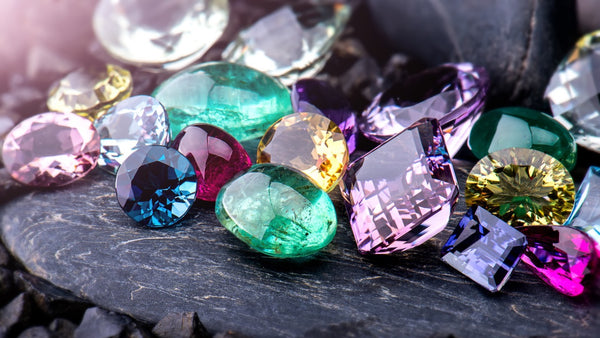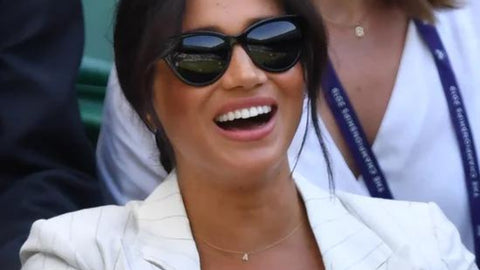Understanding the four C's of Coloured Gemstones
Colourful gemstone education
Sapphires - Rubies - Emeralds
There is no denying these coloured gemstones’ beauty or value. Just like diamonds, these precious stones have their 'four c's' which help determine their quality and value. But what does this mean?
Understanding what each of these factors are is essential for anyone looking to buy or sell coloured gemstones - or even help determine the value of the ones you already own. Here, we take a closer look at each of the four c's; colour, cut, clarity, and carat weight, and how they affect the appearance and pricing of the stone.
Colour
The first and most important factor to consider when evaluating coloured gemstones is colour. The colour of a gemstone is created by the chemical elements and impurities within the stone. The hue, saturation, and tone of the colour can all affect the value of the stone. For example, a ruby with a deep red colour will be more valuable than one with a lighter pinkish-red colour.
Colour is usually the most important factor when determining the quality and value of a coloured gemstone, not only because the colour is the first thing that people notice, but also because the more intense the colour, the more valuable the stone generally is.
When it comes to coloured gemstones, there are many different hues to choose from. Sapphires can range from deep blue to pale pink, while emeralds can vary from deep green to light green. Rubies are typically a deep red colour, but can also have pinkish or purplish tones.
Cut
The cut of a coloured gemstone refers to its shape and proportions. While colour may be the first thing people notice, the cut is crucial in bringing out the best of its colour and clarity - different cuts can affect the colour of the stone, as certain cuts can make the colour more intense or bring out certain hues. For example, a rectangular cut will enhance the colour of a blue sapphire, while a round cut will enhance the colour of a ruby - just like on the Ruby Six Stone Ring. Some popular cuts for coloured gemstones include round, oval, pear, and cushion cuts.
If you cut a blue sapphire in a rectangular shape, it can make the blue colour look deeper and richer. That's because the long, straight sides of the cut help to keep more of the blue colour inside the gem, which makes it look brighter. On the other hand, if you cut a ruby in a round shape, it can make the red look brighter and more even. The round shape helps to spread the red colour throughout the gem more evenly, which makes it look more lively.
The proportions of the cut are also important. A well-proportioned cut will ensure that the light entering the stone is properly reflected, resulting in maximum brilliance and fire. A cut that is too shallow or too deep will result in a loss of brilliance and value.
Clarity
The clarity of a coloured gemstone refers to the presence of inclusions or imperfections within the stone. Inclusions can affect the stone's transparency and brilliance, and can also impact its durability. A gemstone with fewer inclusions will be more valuable than one with more inclusions because they are rarer and more visually appealing.
Inclusions are natural features within a gemstone that can affect its clarity and overall appearance. The fewer inclusions a stone has, the clearer and more transparent it will appear, allowing more light to pass through it. Stones with fewer inclusions are often considered to be more valuable because they are more difficult to find in nature, making them rarer and more desirable to collectors and enthusiasts. The clarity of a gemstone can be determined by the size and location of the inclusions or imperfections, as well as the overall quality of the stone.
Some coloured gemstones, such as emeralds, are more likely to have inclusions than others. This is due to their formation process and does not necessarily indicate a lower quality stone. However, the size and location of the inclusions can still impact the value of the stone.
Carat Weight
Carat weight is a measure of a gemstone's weight (one carat equals 0.2 grams.) The carat weight of a coloured gemstone can affect its value, but it is important to remember that two stones of the same carat weight can have different values depending on their other characteristics, such as colour, cut, and clarity.
Two stones of the same carat weight can have different values depending on their other characteristics, such as colour, cut, and clarity. However, it is important to note that larger stones are generally more rare and valuable than smaller stones.
It is also important to consider the intended use of the gemstone. For example, a larger stone may be more suitable for a statement piece of jewellery, while a smaller stone may be better suited for a delicate piece.
Care and Maintenance
A fifth and bonus ‘C’ - care. It is important to properly care for and maintain your coloured gemstones in order to preserve their beauty and value. This includes avoiding exposure to heat and chemicals, which can damage the stone, and cleaning the stone regularly with a soft cloth and mild soap.
Coloured gemstones are beautiful and valuable, and understanding the four Cs of colour, cut, clarity, and carat weight is essential for anyone looking to buy or sell these precious stones. By considering these factors, as well as certification and care and maintenance, you can make informed decisions about the quality and value of a coloured gemstone.Related Articles
How Custom Initial Necklaces Empower Self-Expression
Exploring Name Necklace Styles: What You Need to Know
The Beauty of Arabic Calligraphy and the rise of the Arabic Name Necklace
Are you curious about this beautiful art form and the way personalised Arabic name necklaces have taken the world by storm?
Why we love our Love Jewellery Collection and its gifting options!
Handcrafted jewellery made with love is one of the beliefs Argent & Asher live by.





